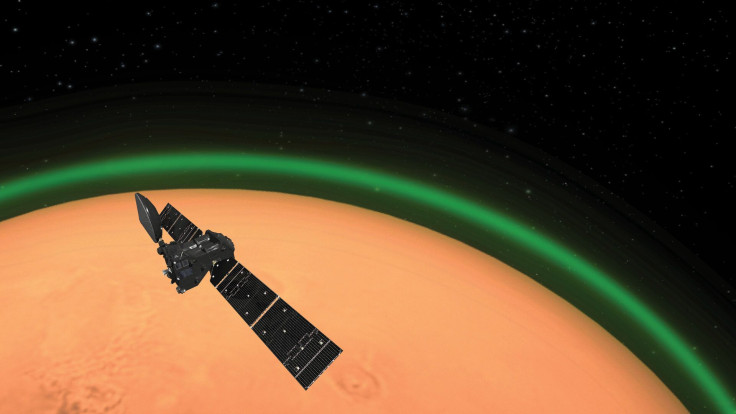Weird Green Glow In Mars’ Atmosphere Spotted By ESA Orbiter

KEY POINTS
- ESA's ExoMars mission detected greenish atmospheric glow around Mars
- The glow is similar to that of Earth's during polar auroras
- The newly discovered atmospheric phenomenon on Mars was caused by glowing oxygen
A mission launched by the European Space Agency (ESA) to study Mars detected an odd greenish glow in the Red Planet’s atmosphere. According to the agency, the discovery marked the first time that the same glow was spotted around a planet other than Earth.
The rare atmospheric phenomenon was detected by the ExoMars Trace Gas Orbiter (TGO), which was launched by the ESA through a collaborative project with Russia’s space agency Roscosmos. One of the objectives of the orbiter is to study traces of gasses in the Martian atmosphere.
During its recent observations of the Red Planet, the TGO came across an eerie-looking glow coming from Mars’ atmosphere. According to ESA’s scientists, the green-colored glow was caused by glowing oxygen in the planet’s atmosphere.
They believe it was caused by the same phenomenon that triggers Earth’s own greenish glow. According to the scientists, this occurs when high-energy electrons from space, such as those that come from solar winds, hit Earth’s upper atmosphere.
The interaction between the atmosphere and the electrons forms stunning polar auroras and causes oxygen to glow.
“One of the brightest emissions seen on Earth stems from night glow. More specifically, from oxygen atoms emitting a particular wavelength of light that has never been seen around another planet,” scientist Jean-Claude Gerard, the lead author of a new study published in Nature Astronomy, explained in a statement.
“However, this emission has been predicted to exist at Mars for around 40 years – and, thanks to TGO, we’ve found it,” he added.
Through TGO’s observations, the scientists learned that the atmospheric glow on Mars was also caused by oxygen molecules. They also noticed that the brightness of the glow varied depending on the altitude, which indicates that it is affected by its distance from the Sun.
Since the discovery marked the first time that the greenish atmospheric glow was spotted around Mars, the scientists noted that further studies are yet to be conducted in order to understand its exact nature.
Even though it resembles Earth’s greenish glow, the vast difference between the planet’s atmospheric conditions and those of Mars indicate that other factors might be causing the rare phenomenon on the Red Planet.
“The observations at Mars agree with previous theoretical models, but not with the actual glowing we've spotted around Earth, where the visible emission is far weaker,” Gerard stated. “This suggests we have more to learn about how oxygen atoms behave, which is hugely important for our understanding of atomic and quantum physics."
© Copyright IBTimes 2025. All rights reserved.




















